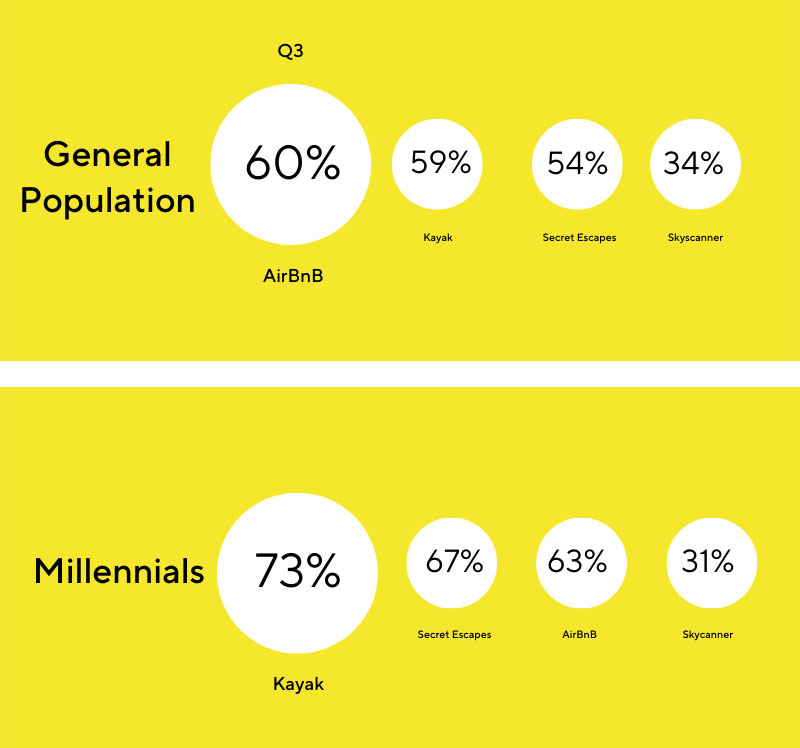
Over 70% of brand managers consider building an audience more important than converting sales, with more and more CMOs seeing the importance of a solid brand strategy.
Increasing brand awareness is the first step in building a loyal audience, and it seems simple enough. Just create more marketing campaigns and increase spend, right? Wrong.
There are many mistakes that can be made in increasing brand awareness that can harm your brand in the long run. This article outlines four common mistakes companies make while working on brand awareness. Take care to avoid them.
Not digging deep enough
If you are marketing to everybody, you might as well be marketing to nobody at all. Unfortunately, many brands still make this mistake.
Marketing with the goal of having everybody aware of your brand will ultimately fail. On the other hand, focusing campaigns just on your audience will increase brand awareness. Why? Because you will have a focus that will enable you to create more targeted campaigns and better spend your budget.
After studying travel brands in the UK, we uncovered an important lesson for brand managers: Not all audiences perform the same. The study showed that Kayak was just 1% off Airbnb when it came to brand awareness across the general public. However, when the results were further segmented to just incorporate millennials, brand awareness for Kayak shot to 73%, 10% more than Airbnb.
Source: Latana
Harness the power of your target audience if you want to see real growth in brand awareness.
Not tracking brand awareness long term
A report by Les Binet and Peter Field stated that, on average, marketers should invest 60% of their budgets in long-term brand building and 40% in short-term sales activation. Yet marketers find this a big challenge. Investment in paid social media campaigns reached $31 billion in 2016 and larger companies spent around 13% of their revenue on digital marketing in 2017. When spending that kind of money on ads, naturally you’d want to know the impact they make.
The brand is a long-term game with one main goal: loyalty. Tracking brand awareness for just one campaign won’t really tell you how close you are to reaching that goal. All it will tell you is that, for now, while your campaign is running, people know your brand.
But will they remember it in a few months?
You need to measure brand awareness over longer periods of time to truly see what is driving improvements. Quarterly tracking is always a good starting point but if you are a big brand running numerous campaigns, monthly, or even weekly might be a better option.
Not understanding what the results mean
There are many signals that brand awareness results can give regarding the health of your brand. The results can help you see if a certain marketing campaign had an impact, if you should make changes to a campaign, and can help you understand your target audience better.
Most brand managers are aware of this, and that’s good. But the mistake that they make is only taking on board the positive results. Sadly, any unexpected negative results are often blamed on the brand tracking method itself.
If your brand awareness went down or didn’t increase as much as you anticipated, remember the following: A realistic change is between 3-5%. In addition, it is normal for brand awareness to fluctuate over time. If you find that happening, consider the following possibilities:
Your brand is too new
A consumer needs 5-7 interactions with your brand before they will be able to remember it. Have you given your target audience that opportunity yet?
You don’t have a loyal audience
Even the biggest companies need to continually showcase their brand’s values in their marketing. Are you doing that? If not, people won’t remember you.
It’s a matter of science
If you want to blame anything for disappointing brand awareness results, blame science. The brain has limited space and pushes out old information to make space for new information. It could be that your competitor is literally knocking you out of the minds of your target audience.
Imprecise tracking
Finally, the biggest mistake that brand managers make in brand awareness is not tracking it accurately.
There are many free tools that can be used but unfortunately, many have their drawbacks. For instance, you can measure a campaign’s momentary performance as impressions via Google Search Console but who is to say this will result in people remembering your brand a month, a week, or even a day later? You can also use social listening tools but they limit your data to just one marketing channel.
With this limited information, you won’t really be able to determine if your brand awareness campaigns are making a difference.
Get precise brand awareness metrics by using one of the following tools instead:
Surveys
Surveys allow you to go straight to the source and provide more flexibility in gathering information — ideal for target audiences! Just be sure that you have a strategy for your survey. Make it fun to complete and user-friendly, in order to increase completions.
Brand tracking software
Brand tracking software provides useful insights but eliminates the manual work of surveys. There are many brand trackers on the market but be sure to do your due diligence before selecting one. One important thing to look for is a brand tracker that uses data science to gather results rather than quota sampling. This small difference can bring your margin of error down from 20% or more to a mere 1-2%.
As paid advertising becomes more inaccessible thanks to demand and rising Customer Acquisition Costs, brand marketing will continue to rise in importance.
Don’t give the competition the chance to get ahead. Start integrating brand awareness campaigns into your marketing strategy today; just remember to avoid those mistakes too many others are making.
Cover image source: Isaac Smith
